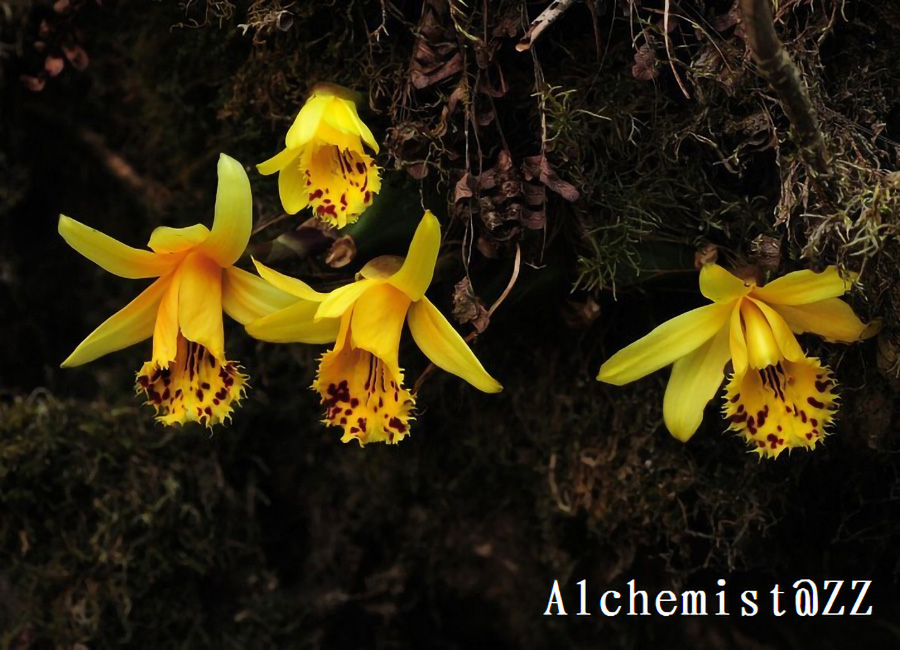- Scientific Name: Pleione forrestii Schltr.
- Ref: Notes Roy. Bot. Gard. Edinburgh. 5:106. 1912
- Synonyms: Pleione alba H.Li & G.H.Feng; P. forrestii f. alba (H.Li & G.H.Feng) Torelli & Riccab.; P. forrestii var. alba (H.Li & G.H.Feng) P.J.Cribb
- Chinese Common Name: 黄花独蒜兰 huánghuā dúsuàn∙lán
- Japanese Common Name: キバナトキソウ [黄花朱鷺草] kibanatokisō
- Family: Orchidaceae
- Genus: Pleione
- Distribution: On humus-covered rocks and tree trunks in open forests and at forest margins; 2200-3200 m. N and NW Yunnan.
- Photo: 04/04/2012, Mt. Gaoligong, Yunnan
Herbs, epiphytic or lithophytic. Pseudobulb green, conic or ovoid-conic, 1.5-3 × 0.6-1.8 cm, 1-leaved. Leaf appearing after flowering, subelliptic to narrowly elliptic-lanceolate, 10-15 × 3-7 cm, papery, base attenuate into a petiole-like stalk 2-3 cm, apex acute or obtuse. Inflorescence erect; peduncle usually 4-9 cm, nearly completely enclosed in 3 or 4 scarious sheaths; floral bracts oblong-lanceolate or lanceolate, 27-33 × 5-7 mm, conspicuously longer than ovary, apex obtuse or subacute. Flower solitary, orange-yellow, pale yellow, or yellowish white, rarely pure white, with brown or crimson spots and marks on lip; pedicel and ovary 9-15 mm. Dorsal sepal oblanceolate, 30-40 × 7-8 mm, apex acute; lateral sepals oblong-oblanceolate, oblique, 30-40 × 8-9 mm, apex obtuse. Petals oblanceolate, falcate, 36-42 × 7-8 mm, apex subacute; lip broadly obovate-elliptic or nearly broadly rhombic, 32-40 × 28-32 mm, base contracted into a short claw, 3-lobed; lateral lobes erect and embracing column, apex rounded; mid-lobe subquadrate, apical margin lacerate, apex emarginate; disk with 5-7 entire but usually slightly undulate lamellae extending from base of lip to midway along mid-lobe. Column arcuate, 25-30 mm; column wings obscure. Fl. Mar-May. 2n = 38*, 39*, 40*, 42*, 44*. (Flora of China)
